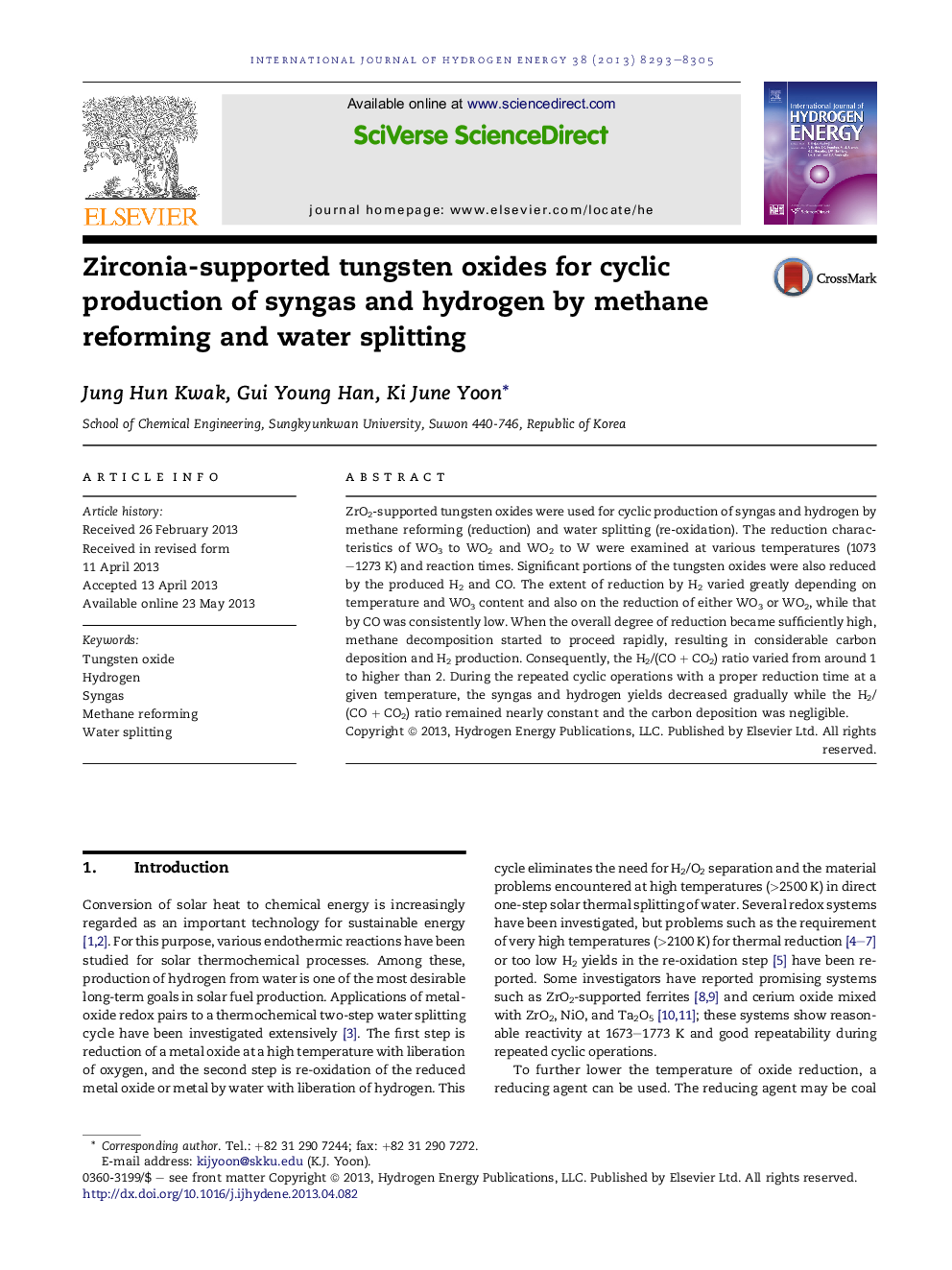| Article ID | Journal | Published Year | Pages | File Type |
|---|---|---|---|---|
| 7722562 | International Journal of Hydrogen Energy | 2013 | 13 Pages |
Abstract
ZrO2-supported tungsten oxides were used for cyclic production of syngas and hydrogen by methane reforming (reduction) and water splitting (re-oxidation). The reduction characteristics of WO3 to WO2 and WO2 to W were examined at various temperatures (1073-1273Â K) and reaction times. Significant portions of the tungsten oxides were also reduced by the produced H2 and CO. The extent of reduction by H2 varied greatly depending on temperature and WO3 content and also on the reduction of either WO3 or WO2, while that by CO was consistently low. When the overall degree of reduction became sufficiently high, methane decomposition started to proceed rapidly, resulting in considerable carbon deposition and H2 production. Consequently, the H2/(COÂ +Â CO2) ratio varied from around 1 to higher than 2. During the repeated cyclic operations with a proper reduction time at a given temperature, the syngas and hydrogen yields decreased gradually while the H2/(COÂ +Â CO2) ratio remained nearly constant and the carbon deposition was negligible.
Related Topics
Physical Sciences and Engineering
Chemistry
Electrochemistry
Authors
Jung Hun Kwak, Gui Young Han, Ki June Yoon,
